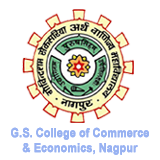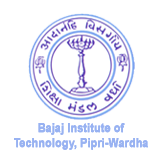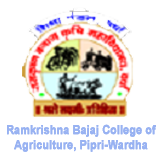Wardha is in Vidarbha which is associated with agrarian distress. As per the Agriculture Department only 10% of the area is irrigated in the district, of which 89% is with wells.
5 years ago we made increasing water availability a key priority of our work in the district. There were over 200 Kolhapuri Type weirs which could be a source of water during the rabi season so we took the responsibility of making them functional. Then we discovered that due to siltation a lot of land , along the nallahs on which these kt weirs were situated, went under water during kharif. So we started desilting these nullahs and in 5 years managed to get an additional 15,000 acres of land brought under cultivation during kharif. This translates into at least Rs 30 Crs of additional income to the farmers that benefited.
One of the benefits of desilting is increase in the water table so we used to
peer into wells alongside. We found that in 5 of the district’s 8 talukas water
in these wells was at 20 feet. And yet a large number of farmers with more than
5 acres of land did not have wells! This did not make sense.
So, we bought a resistivity meter used to assess the availability of water and the nature of the soil strata. Knowing Anil Lalwani of Pune for over 30 years helped. A geologist who has been divining water, he trained faculty from our Engineering Institutes in using it.
For 2 years we did not make progress, but once this responsibility was given to Dr(Mrs) Thakur of our Engineering College and Dr Waghmare of our Polytechnic the wheels started to turn.
Starting January 2025 we have dug 6 wells. In all we have struck water, in 4 below 16 feet and in 2 below 24 feet. In 2 we had to abandon digging further because the water flow was too much!
Excavators with long booms can dig a well up to 40 feet, in 3 days. Cost of the machine is around Rs 3,000 per hour and the job is completed in 40 hours. Thus, it costs Rs 1.2 lacs to dig a well, of which the farmer bears 10% and we the balance. Then he has to spend around Rs 2-3 lacs to make the rings of the well, install a pump and get electricity. If blasting is required, which is often, then he has to spend on it, as also in dewatering.
Before we jumped into the fray farmers tell us that contractors quoted around Rs 3-4 lacs only for digging. And water divining was with coconuts and sticks.
Once the farmer sees water all his inhibitions about spending vanish. A farmer in Samudrapur, blasted 7 times, because he could see the wetness beneath the rock!
So far we have received over 400 applications from farmers. We should be doing 50 wells by end April this year. And a 100 next year. We are hoping that having tasted water and seen the lower cost of digging a well, farmers will start digging on their own. We would be happy to do an assessment of the feasibility of the well.
The government has a program of digging wells but they support only small farmers with less than 5 acres of land. In our view it is the 5-15 acre farmer who is viable & profitable. It is he who needs to be supported. In Wardha there are at least 20 farmers in each village with such land holding.
Why did the farmers not dig wells?
The absence of funding for investment by farmers is one reason. The District Cooperative Bank is dead. Banks will not lend fearing loan waivers. Farmers and their so called leadership have brought this upon themselves. Classic good for today, bad for tomorrow kind of decision; that our political system has got addicted to.
But a deeper reason are their precarious finances and their lack of confidence in taking a risk.
For a time we debated whether we should get involved in private beneficiary initiatives. But the positives outweigh the downsides. When a farmer has a well, his kharif output goes up because he can irrigate when rains play truant. His Rabi output becomes possible. His income and resilience increase manifold. Each well should lead to a Rs 1-2 lac per annum increase in income. This means employment for others and moderation of prices for the customer.
Why have not others done this? It is the obvious thing to do. However, in India fellas obvious is not so obvious. Theory is well known but doers are scarce. A confluence of resources, both financial and human, allow us to accomplish with minimal over heads. An educational institution working in tandem with a business house is a powerful thing. However, the simple doggedness to do, is the essential ingredient. In all these the support of the Bajaj family and the dedication of my colleagues is crucial. Each well is dug from 6 am to 9 pm. My colleagues ride bikes 40-50 kms from Wardha to be there for this period. One can’t ask for better colleagues. That the results are so good is not surprising.













